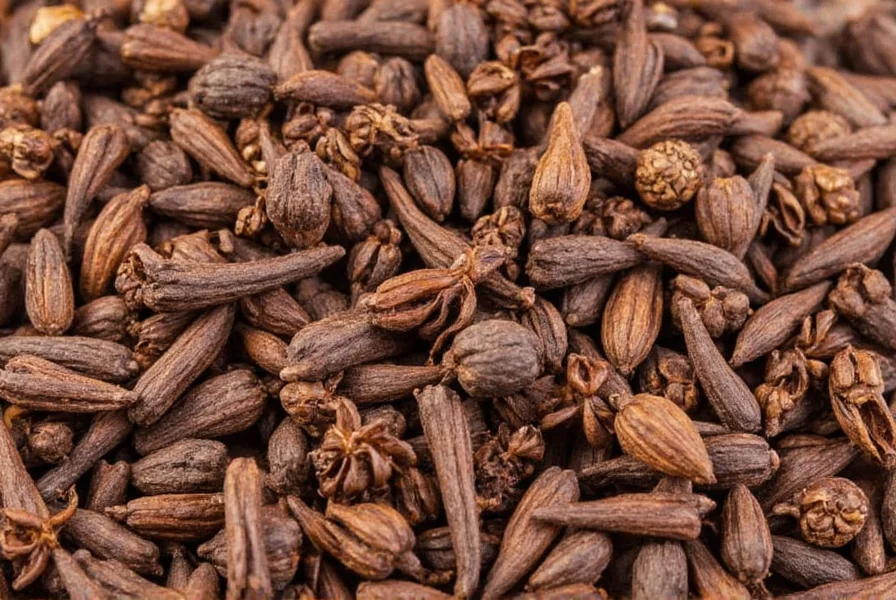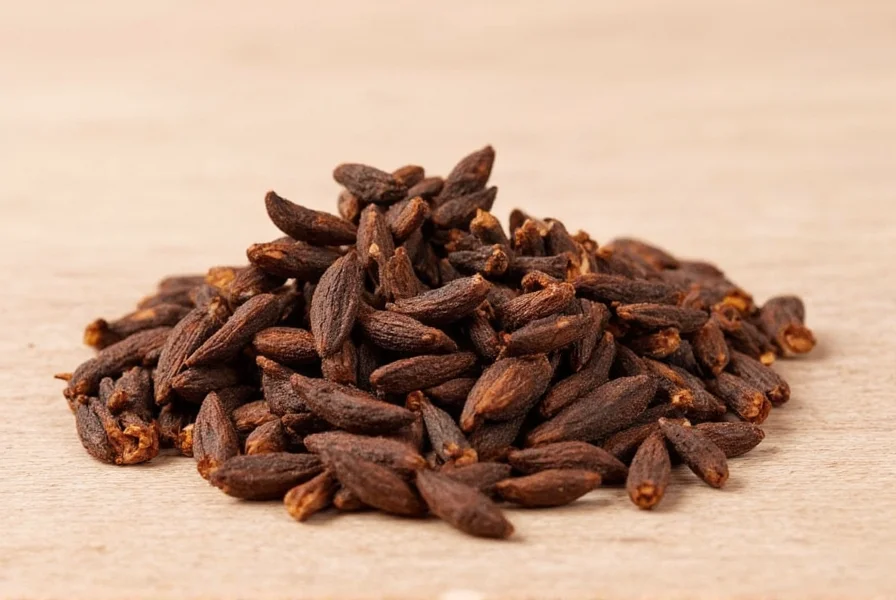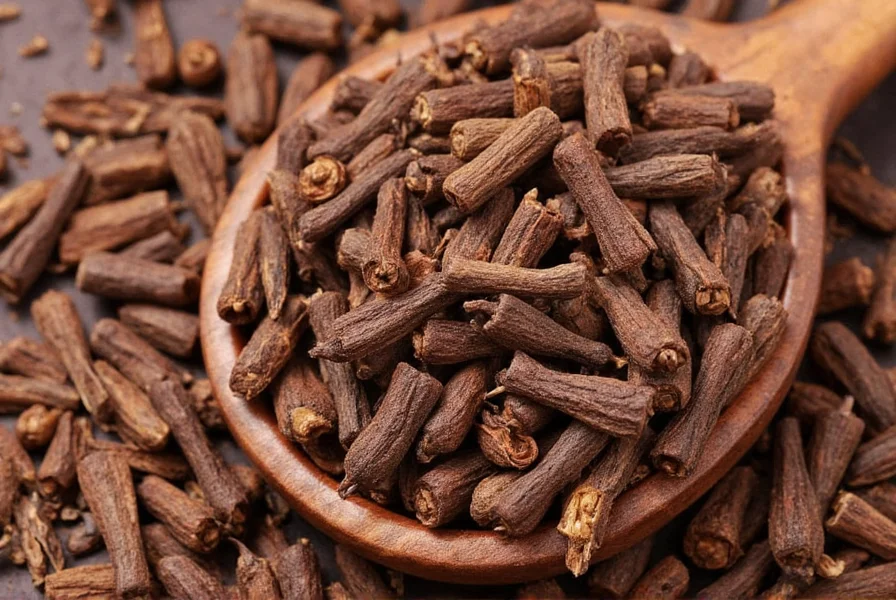Understanding Dried Cloves: Nature's Potent Spice
Dried cloves represent one of the world's oldest and most valued spices, with historical records showing their use dating back to ancient Chinese and Middle Eastern civilizations. Unlike fresh cloves, which are rarely available outside their growing regions, dried cloves undergo a careful sun-drying process that concentrates their essential oils and extends their shelf life significantly.
Botanical Background and Production Process
The clove tree (Syzygium aromaticum) thrives in tropical climates, with major production occurring in Indonesia, Madagascar, and Tanzania. Harvesters carefully pick the flower buds when they transition from green to pink but before they open. These buds then undergo a 4-5 day sun-drying process, during which they lose approximately 60% of their moisture content and develop their characteristic dark color and intense aroma.
| Nutrient | Per 1 Teaspoon (2g) | Percentage of Daily Value |
|---|---|---|
| Calories | 6 | 0% |
| Total Fat | 0.3g | 0% |
| Dietary Fiber | 1.1g | 4% |
| Vitamin K | 3.6mcg | 3% |
| Manganese | 0.3mg | 13% |
Culinary Applications of Dried Cloves
Chefs worldwide prize dried cloves for their complex flavor profile that combines warmth, sweetness, and subtle bitterness. When learning how to use dried cloves in cooking, remember they're potent—use sparingly. Whole dried cloves work beautifully studded into hams or onions for flavoring stocks, while ground cloves integrate smoothly into spice blends like garam masala and pumpkin pie spice.

Global Culinary Traditions Featuring Dried Cloves
From Indian biryanis to German glühwein, dried cloves appear in diverse culinary traditions. In Middle Eastern cuisine, they're essential in rice dishes and meat marinades. Scandinavian baking incorporates ground dried cloves into festive treats like gingerbread. Understanding dried cloves vs fresh cloves reveals why dried versions dominate globally—fresh cloves have a milder flavor and extremely limited shelf life, making dried cloves the practical choice for most applications.
Proper Storage Techniques for Maximum Freshness
The best way to store dried cloves involves three key principles: darkness, cool temperatures, and airtight containment. Exposure to light degrades eugenol content, while humidity causes clumping and flavor loss. For optimal results:
- Store whole dried cloves in opaque glass containers
- Keep containers in a cool, dark pantry (below 70°F/21°C)
- Avoid refrigeration due to moisture risks
- Grind cloves only when needed for maximum flavor retention
When properly stored, whole dried cloves maintain peak quality for 1-2 years, while ground cloves lose potency within 6 months. Check for freshness by crushing a clove between your fingers—if the aroma remains strong and penetrating, they're still viable.
Health Considerations and Traditional Uses
Traditional medicine systems have utilized dried cloves for centuries, particularly for oral health applications. The eugenol content provides natural analgesic properties, explaining why clove oil remains a common ingredient in dental products. Research suggests dried cloves contain significant antioxidants, though health benefits of dried cloves should be understood within context—they complement but don't replace professional medical care.
Consuming excessive amounts may cause mouth irritation or interact with blood-thinning medications. As with any potent spice, moderation represents the key principle when incorporating dried cloves into your diet.

Substitution Options and Recipe Adjustments
When you need a substitute for dried cloves in recipes, consider these alternatives based on your flavor goals:
- Allspice (use 3/4 teaspoon for every 1 teaspoon of cloves)
- Nutmeg (use half the amount as cloves)
- Cinnamon (use double the amount for milder flavor)
- Pumpkin pie spice (use equal amounts)
Remember that each substitute creates a different flavor profile. For authentic results in traditional recipes like biryani or mulled wine, dried cloves remain irreplaceable. Understanding dried cloves shelf life helps prevent using stale spices that compromise your dishes.
Frequently Asked Questions
How can I tell if my dried cloves have gone bad?
Dried cloves lose potency over time rather than spoiling. Check freshness by crushing a clove—if it releases a strong, spicy aroma, it's still good. Stale cloves appear faded, feel lightweight, and lack fragrance. Properly stored whole dried cloves maintain quality for 1-2 years.
Can I substitute ground cloves for whole dried cloves in recipes?
Yes, with careful conversion. Use 3/4 teaspoon ground cloves for every 1 teaspoon of whole dried cloves called for in recipes. Remember that ground cloves lose potency faster, so you may need slightly more if your spice is older. For dishes where you'll remove whole cloves before serving, substitution isn't recommended.
What's the difference between Indonesian and Madagascar dried cloves?
Indonesian cloves typically contain 15-17% eugenol with a sweeter profile, while Madagascar cloves offer 18-20% eugenol with more intense heat. Indonesian varieties work better in delicate dishes like baked goods, while Madagascar cloves excel in robust applications like spice blends and meat rubs where stronger flavor penetration is desired.
Why do some recipes call for toasting dried cloves before use?
Toasting dried cloves in a dry pan for 1-2 minutes releases additional volatile oils, intensifying their aroma and flavor. This technique works particularly well when preparing whole cloves for grinding or incorporating into rice dishes. Be careful not to burn them, as cloves can become bitter when overheated.
How should I measure dried cloves for recipes?
For precision, use 1 teaspoon of whole dried cloves = approximately 6-8 medium buds. When recipes specify "a few" cloves, this typically means 3-4. For ground cloves, remember that 1 whole dried clove equals about 1/8 teaspoon ground. Always measure ground cloves after grinding for most accurate results.











 浙公网安备
33010002000092号
浙公网安备
33010002000092号 浙B2-20120091-4
浙B2-20120091-4